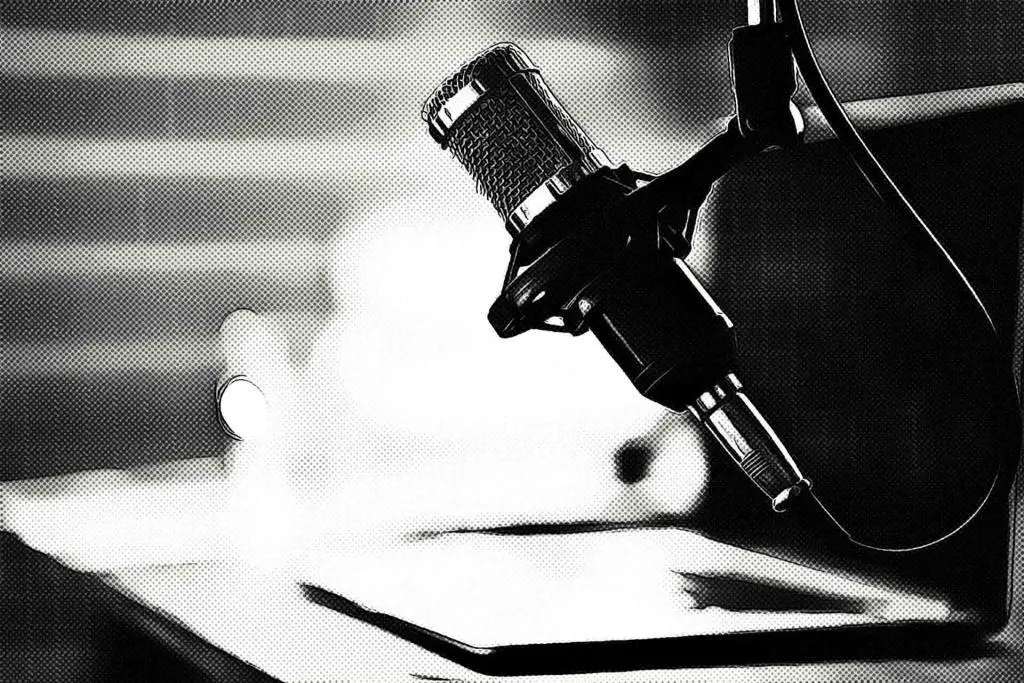We’ve found in the search field archive this question so we’ve try to answear and this is why we’ve put here, on MusicProductionGlossary.Com an area dedicated.

Dynamic vs Condenser Microphones: Table of Contents
Microphones – Dynamic vs Condenser
Microphones are essential tools for capturing sound and converting it into an electrical signal that can be amplified, recorded, or broadcast. They are used in a wide range of applications, from live performances to studio recording and broadcasting. In this article, we will take a detailed look at two of the most common types of microphones, dynamic and condenser microphones, and explore the differences between them.
What are Microphones?
A microphone is a device that converts sound waves into an electrical signal. The microphone’s diaphragm, which is a thin piece of material, moves in response to sound waves, generating an electrical current. This current is then amplified and sent to a sound system or recording device. The type of microphone, and the way it converts sound into electrical signals, can affect the quality of the sound that is captured.
Overview of Dynamic and Condenser Microphones
Dynamic microphones and condenser microphones are two of the most common types of microphones. Dynamic microphones use a simple design that includes a diaphragm and a coil of wire that are connected to a magnet. Condenser microphones, on the other hand, use a more complex design that includes a diaphragm and a backplate that are charged with an electrical current.
Dynamic Microphones
Dynamic microphones use a simple design that includes a diaphragm and a coil of wire that are connected to a magnet. As sound waves hit the diaphragm, it moves the coil, which generates an electrical signal. This signal is then amplified and sent to a sound system or recording device.
Advantages of Dynamic Microphones
- Durability: Dynamic microphones are relatively rugged and can withstand high sound pressure levels, making them well-suited for live performances and other situations where the microphone may be subjected to physical stress.
- Handling High Sound Pressure Levels: Dynamic microphones can handle high sound pressure levels, making them ideal for use in loud environments such as concerts or sporting events.
- Cost-effectiveness: Dynamic microphones are relatively inexpensive, making them a cost-effective option for many users.
Disadvantages of Dynamic Microphones
- Less Clarity and Sensitivity: Dynamic microphones are less sensitive than other types of microphones and may not capture as much detail or clarity.
- Limited Frequency Range: Dynamic microphones have a limited frequency range, which means they may not capture the full range of sounds in a performance.
Condenser Microphones

Condenser microphones use a more complex design that includes a diaphragm and a backplate that are charged with an electrical current. The diaphragm is extremely sensitive and moves in response to sound waves, which changes the electrical charge between the diaphragm and the backplate. This change in electrical charge generates an electrical signal that can be amplified and recorded.
Advantages of Condenser Microphones
- High Sensitivity and Accuracy: Condenser microphones are sensitive to sound and can capture a wide range of frequencies, making them well-suited for studio recording and other applications where a high-quality, detailed sound is desired.
- Wide Frequency Range: Condenser microphones have a wide frequency range, which means they can capture a wide range of sounds in a performance. This makes them suitable for capturing subtle nuances in sound and reproducing them in a recording or broadcast.
- Good for Studio Recording: Condenser microphones are particularly well-suited for studio recording, as they are able to capture a wide range of frequencies and produce a high-quality, detailed sound. This makes them an ideal choice for recording music, voice-overs, and podcasting.
Disadvantages of Condenser Microphones
- Fragility: Condenser microphones are relatively fragile and may be damaged if dropped or exposed to extreme temperatures.
- Require External Power: Condenser microphones require external power to operate, usually from a battery or an external power supply. This means that they may not be suitable for use in remote locations or for long periods of time.
- Higher Cost: Condenser microphones are generally more expensive than dynamic microphones, which may make them less accessible to some users.
Comparison of Dynamic and Condenser Microphones
Dynamic microphones are simple, durable and can handle high sound pressure levels, but have less clarity and sensitivity compared to condenser mics which are more delicate, need power to work and are more sensitive and accurate.
Dynamic microphones are well-suited for live performances and other situations where the microphone may be subjected to physical stress, while condenser microphones are ideal for studio recording and other applications where a high-quality, detailed sound is desired.
Dynamic microphones are generally less expensive than condenser microphones, but the cost of a microphone should not be the only consideration when making a purchase.
In conclusion, dynamic and condenser microphones are two of the most common types of microphones, and each has its own set of advantages and disadvantages. Dynamic microphones are simple, durable and can handle high sound pressure levels, but have less clarity and sensitivity compared to condenser microphones which are more delicate, need power to work and are more sensitive and accurate.
When choosing between dynamic and condenser microphones, it is important to consider your specific needs. If you are looking for a microphone that can withstand high sound pressure levels and is relatively inexpensive, a dynamic microphone may be the best choice. But if you need a microphone that can capture a wide range of frequencies and has high sensitivity and accuracy, a condenser microphone may be a better choice.
Other Questions Related to “Microphones – Dynamic vs Condenser”
The general differences between dynamic and condenser microphones are described in the previous text. However, with regard to the topic, we have discovered additional queries that we will expound on briefly below. In case you have further inquiries, please do not hesitate to forward them to us, and we will do our best to provide you with prompt and comprehensive responses.
What are the Dynamic Microphones Best for?
Dynamic microphones are perfect for capturing loud and powerful sounds, making them a popular choice for live performances and recording sessions. They work by using a small diaphragm that vibrates in response to sound waves, which then converts the sound into an electrical signal.
One of the reasons why live sound engineers love dynamic microphones is their durability. They can withstand high levels of sound pressure without getting damaged, making them ideal for use in live music venues where the sound can get pretty intense. Another benefit of dynamic microphones is their ability to reject unwanted background noise. They are particularly useful in noisy environments, such as live concerts or outdoor events, where it can be difficult to control the sound environment. In addition, they tend to be more affordable than other types of microphones, making them a great option for those on a budget.
Is a Dynamic or Condenser Mic better for Vocals?
The age-old debate of whether a dynamic or condenser mic is better for vocals is one that has been ongoing for years.
When performing live, it is common practice to use a dynamic microphone because of its capacity to endure high sound pressure levels, which enables it to compete effectively with instruments that produce a lot of volume. In addition, dynamic microphones are typically less expensive than condenser mics, making them an ideal option for people shopping on a limited budget.
A condenser microphone is typically considered to be the superior option when recording in a studio. Because it is more sensitive and can record more detail, the sound that it produces is both more distinct and more refined. The use of a condenser microphone is perfect for adding a level of depth to recordings as well as capturing the subtleties of vocal performances.
So whether you prefer the ruggedness of a dynamic mic or the clarity of a condenser, remember to choose the mic that best suits your individual needs and style. At the end of the day, the most important thing is to keep making music and expressing yourself through your art.
Do Dynamic Mics Pick up Background Noise?
When compared to condenser microphones, dynamic microphones have been observed to have a lower sensitivity to ambient noise. This is due to the fact that dynamic microphones are engineered to handle high levels of sound pressure and are intended to be used in noisy live performance settings.
However, it is essential to keep in mind that even dynamic microphones have the potential to pick up some ambient noise in the recording. The amount of ambient noise that is picked up by dynamic microphones can vary significantly based on the particular microphone in question as well as the setting in which it is being utilized.
For example, if a dynamic microphone is utilized in a loud environment that also has a high degree of background noise, the microphone might still take up some of the background noise.

